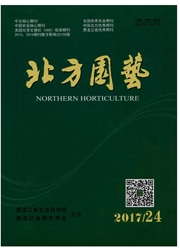

 中文摘要:
中文摘要:
以78份不结球白菜栽培品种为试材,采用SSR分子标记技术,利用21对多态性对其进行多态性分析;并通过LTPGMA法进行聚类分析。结果表明:该试验共产生了56个等位基因标记,每对引物的等位基因数2~4个;78份不结球白菜可分为三大类,类群Ⅰ包括51份普通白菜、4份乌塌菜和3份菜心材料,遗传变异幅度较大,普通白菜来自南北方各地,反映了南北方栽培的普通白菜较近的亲缘关系;类群Ⅱ包括2份菜心、3份普通白菜和5份苗用大白菜;类群Ⅲ包含6份普通白菜、1份菜心和3份苗用大白菜。北方培育的苗用大白菜被分别聚在类群Ⅱ和Ⅲ。反映了其在选育过程中遗传背景发生了很大变异。该研究结果为不结球白菜遗传基础的拓宽和育种亲本的利用提供了科学依据。
 英文摘要:
英文摘要:
Taking 78 non-heading Chinese cabbage cultivars as materials,21 polymorphic SSR loci were used to study the genetic relationship of non-heading Chinese cabbage cultivars using SSR marker, and cluster analysis was done by UPGMA method. The results showed that 56 alleles were detected with 2 - 4 alleles each primer. 78 cultivars were clustered three groups. Group Ⅰ had a larger genetic variation level, which included 51 chinensis cultivars, 4 narinosa cultivars and 4 parachinensis cultivars. The 51 chinensis cultivars were collected from the south and the north,which reflected their closer genenc relationship. Group Ⅱ included 2 parachinensis cultivars,3 chinensis cultivars and 5 seedling pekinensis cultivars. Group Ⅲ included 6 chinensis cultivars, 1 parachinensis cultivars and 3 seedling pekinensis cultivars. The seedling pekinensis cultivars were clustered into two different groups, which reflected their genetic background during the breeding process. The results provided scientific basis for expansion of genetic basis and utilization of breeding parents in non-heading Chinese cabbage.
 同期刊论文项目
同期刊论文项目
 同项目期刊论文
同项目期刊论文
 期刊信息
期刊信息
